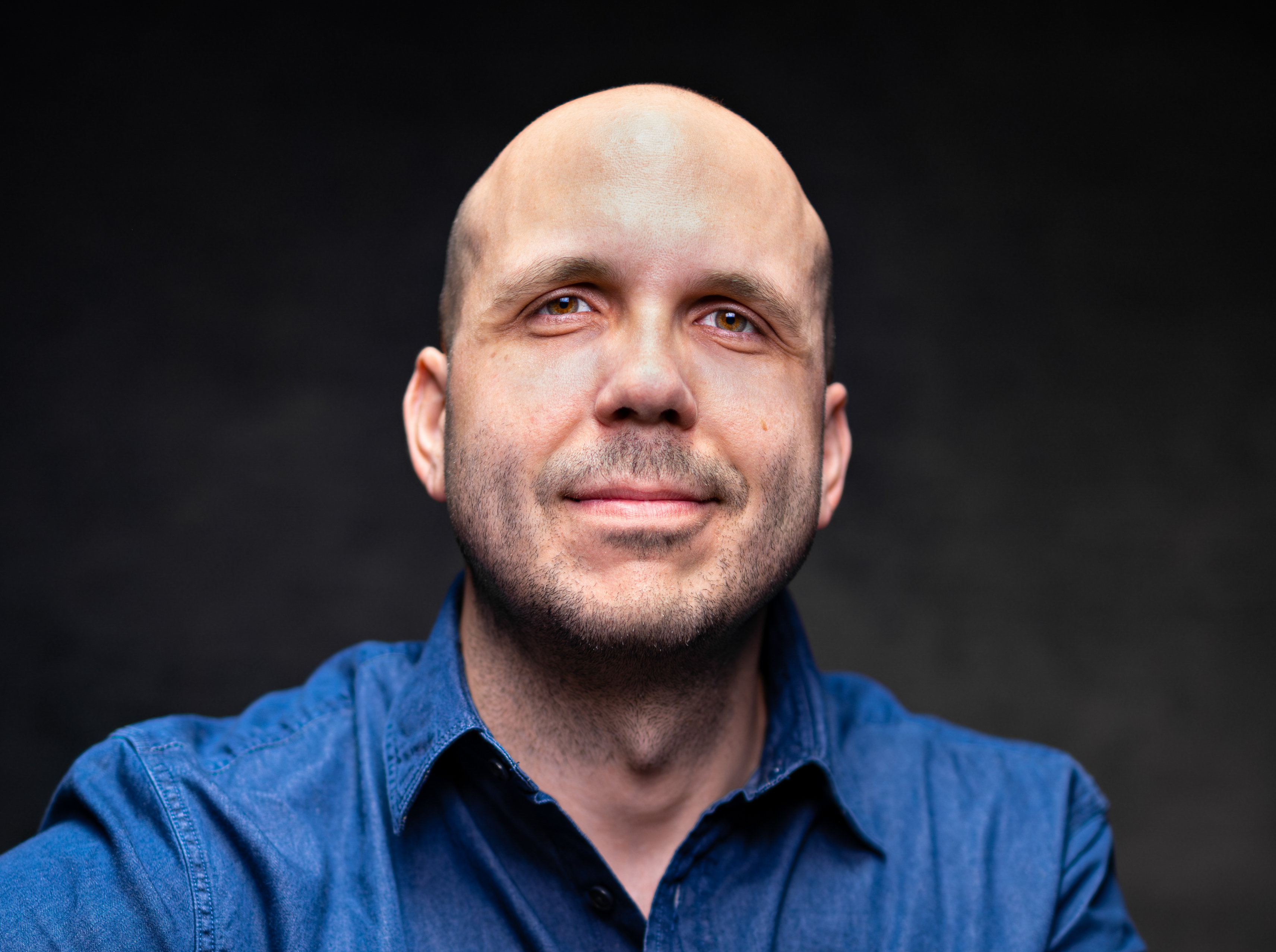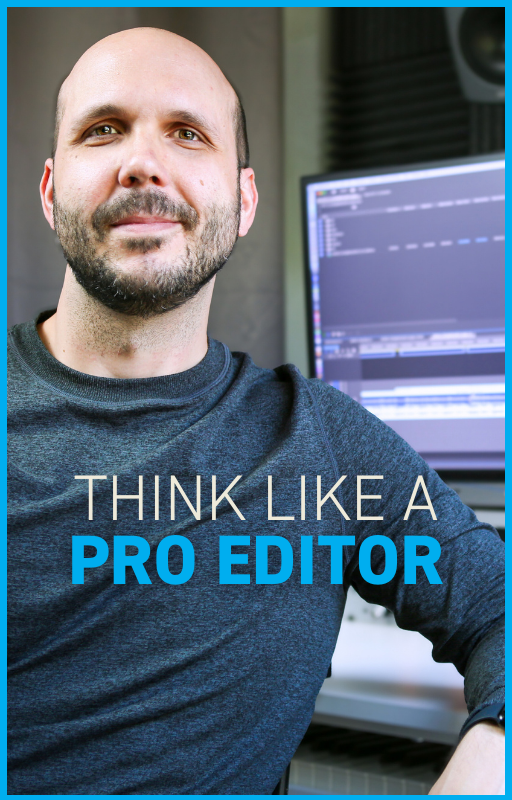How to Edit a Documentary Like a Pro (4 Lessons)
Mar 23, 2025Have you ever been in a situation where you’ve got tons of footage—maybe even hours of it—your timeline’s in disarray, and there’s no clear story in sight? Where do you even begin?
I’ve been there more times than I can count. So, I want to share four big lessons I’ve learned over my 20-year editing career that can really help you, especially when it comes to documentary or interview editing. These are concepts you can start applying right away.
And at the end, I’ll share why I strongly disagree with one of the most common pieces of advice in documentary editing.
Let’s rewind. I was a 19-year-old film school student, and I had just landed one of my first paid editing gigs—probably for less than minimum wage at the time. It was a feature-length documentary. I sat down, and in front of me—on actual tape—was over 300 hours of footage. Not 10, not 50, not even 200. More than 300. It was overwhelming.
Lesson One: Don’t Dive In Without a Plan
The fastest way to waste days, weeks, even years of your life, is to jump into a documentary project without a plan. That project I just mentioned? The filmmakers had overshot and under-planned. It was their first feature, and there was no real clarity or structure—just a massive pile of footage.
As editors, we can make our own plan. It doesn’t need to be a script or screenplay—that’s too rigid for documentary work—but you do need a story structure. One of the biggest benefits of having a structure is that you can set aside content or storylines that don’t fit. That helps narrow your focus.
For a feature-length doc, you’ll likely follow a similar dramatic structure to a narrative film. Start with the protagonist’s ordinary world. Then an inciting incident kicks things off. A plot point sends you into act two, followed by a midpoint where things shift. At the end of act two, you hit what’s often called the “big gloom”—the lowest, most hopeless moment—before rising action leads into the climax and resolution.
For shorter pieces, like a two-minute doc I cut recently, I found it helpful to break it down into 25% chunks and make sure there’s change at each point. That structure made the editing process more efficient, more fun, and the final video more compelling—because change and progression are hardwired into how we experience stories.
Lesson Two: Cut With Your Ears First
Once you’ve outlined your structure, start with the audio—not the visuals. In documentary or interview-based editing, the audio is the story. In scripted narratives, visuals drive things. But in documentary work, it’s about what people say.
I often cut an entire version of the piece focused solely on audio. Of course, the visuals are synced up, but if the audio flows and works, you’re probably onto something strong in terms of story and content.
When I worked on that two-minute documentary about an environmentally friendly office tower in Austin, I color-coded the different story sections. And sure enough, it naturally fell into those 25% story chunks I mentioned. That structure helped everything flow better and made the story more engaging.
Lesson Three: Shape the Audio, Don’t Just Use It
A common beginner mistake—and one I made early on—is taking audio at face value. You pick the best lines, put them in order, and move on. But in professional editing, you’re constantly shaping and manipulating audio—not to distort reality, but to bring out the most impactful story.
That means carefully pulling a clip from one spot and combining it with another from somewhere else. It means removing verbal clutter—ums, ahs, likes—so people sound more articulate. Ever watched a documentary and thought, “Wow, these people sound so eloquent”? That’s editing.
I also adjust the lengths of pauses between words, sentences, even paragraphs to shape the rhythm and emotional flow. Room tone is key here—it lets you insert pauses without making the audio sound unnatural or full of cuts.
But there’s a caveat. On one project, I edited the dialogue so tightly—removing all imperfections—it ended up feeling sterile. I had to go back and reintroduce some of those natural pauses and filler words to bring back the emotion. So yes, tighten and polish your audio, but always aim for emotional impact. If you’ve over-edited, you’ll feel it.
Lesson Four: Treat Visuals With Equal Care
Once your audio story is built, shift gears and give your visuals just as much attention. The danger of being too audio-focused early on is ending up with unmotivated or unnecessary B-roll—footage that’s just there to cover cuts instead of adding to the story.
Instead, find images that enhance the story and treat them with care. Don’t just “cover the gaps”—elevate the narrative. Thoughtful visual choices paired with a strong audio backbone create a compelling edit.
Bonus Lesson: Use Sound Design Creatively
Many people think documentary or interview pieces don’t need sound design, but that’s not true. In that office tower documentary, I used nature-inspired sounds—bird chirps, wind, ambient elements—to build a sound brand that reinforced the environmentally friendly message.
Sound design doesn’t just support the visuals—it elevates the whole story. So, take a sound design pass in your edits and think about how audio elements can amplify emotion, tone, and atmosphere.
Why I Don’t Recommend Relying on Transcripts
Here’s the controversial take: I don’t think transcripts are the best starting point for editing short documentary or interview pieces.
I once edited a two-and-a-half-hour interview down to ten minutes. I started by reading and marking up the transcript. But when I pulled those clips into my timeline, half of them didn’t work as well as they had on paper. The tone, delivery, and emotion just weren’t there. And I missed a ton of great moments that hadn’t stood out in text form.
Because filmmaking isn’t about what’s said—it’s about how it’s said. A transcript is great for a book, but in a film, performance matters. So don’t use transcripts as a crutch. Watch your footage. Get familiar with it. That intimacy with the material is one of the best traits an editor can have.
Now, sure—for longform projects, you may need transcripts for searching or getting a high-level overview. But don’t let them replace actually watching the footage. You never know what hidden gems you’ll discover just by seeing and hearing it all unfold.
Happy editing!

Austen is an ADDY award-winning film & commercial editor with over 20 years of experience. He has worked with global brands like Meta, KPMG, SAP, and Christianity Today. His PSA work has championed causes like school safety (with Matthew McConaughey), driving safety, and anti-tobacco. A thought leader in the editing field, his online lessons quickly amassed over 100K views after launch.

